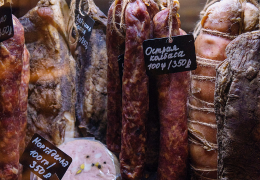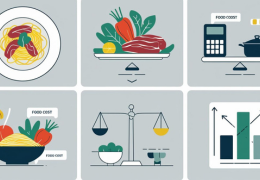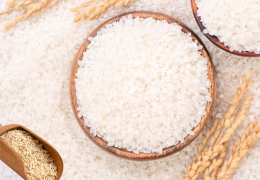How to Manage Food Cost in Your Restaurant: Mistakes to Avoid and Strategies to Reduce Waste
Managing a restaurant involves many challenges, and one of the most crucial is food cost. Food cost, which refers to the cost of raw materials used to prepare dishes, is one of the key indicators that determines a restaurant's profitability. Close control can make the difference between a successful business and one that fails to cover its costs. But what does "managing food cost" really mean? And what are the mistakes and waste to avoid in order to maintain a balanced budget? Let's explore together how to optimize food cost without compromising the quality of your dishes.
What is Food Cost?
Food cost is the ratio between the cost of raw materials used to prepare a dish and the selling price of that dish. To calculate it, simply add up the cost of all ingredients (both primary and accessory) and divide it by the selling price of the dish. This ratio is expressed as a percentage.
Example of Food Cost Calculation
Imagine you are preparing a dish of spaghetti with clams. Here are the ingredient costs:
· Spaghetti (100g): €0.50
· Clams (200g): €2.00
· Garlic (1 clove): €0.05
· Olive oil (30ml): €0.15
· Parsley (10g): €0.10
· Salt and pepper: €0.05
Total ingredient cost: €2.85
If the dish is sold for €12.00, the food cost calculation will be:
2.85 ÷ 12.00 × 100 = 23.75%
A food cost of 23.75% is generally considered optimal for a restaurant, but it can vary depending on the type of cuisine, restaurant, and pricing strategy.
Mistakes and Waste to Avoid
Simply calculating food cost is not enough; you also need to avoid certain mistakes that could compromise your profitability. Here are the main waste areas to keep under control:
1. Portions Too Generous or Poorly Calibrated
Portions should be balanced. Overly large portions can lead to:
· Food waste if the customer does not finish the plate.
· Excessive costs for the restaurant offering more food than necessary, which reduces profit margins.
Solution: Standardize portions and use measuring tools like scales and portioners to ensure every dish is prepared with the right amount of ingredients.
2. Poor Stock Management
Another common mistake is purchasing excess ingredients, which leads to:
· Food waste: Perishable ingredients that aren't used in time must be thrown away.
· Increased costs: Poor stock management results in unnecessary waste and higher operational costs.
Solution: Regularly monitor stock, place targeted orders based on consumption, and apply the FIFO (First In, First Out) rotation system. This ensures that older ingredients are used first, reducing waste and always ensuring fresh ingredients.
3. Waste in the Kitchen
In the kitchen, there are often waste issues related to:
· Incorrect cutting of ingredients: Not using everything an ingredient offers, such as meat scraps or vegetable trimmings.
· Overcooking: If dishes are cooked for too long, the food can lose quality and become unusable.
Solution: Optimize kitchen preparation techniques by making the most of each ingredient. For example, use scraps to make stocks or sauces, reducing waste and cutting costs.
4. Incorrect Stock Rotation (FIFO)
FIFO rotation is a fundamental principle in stock management, ensuring that older ingredients are used before newer ones. Failing to apply this system properly can lead to expired products and unused ingredients being thrown away.
Solution: Make sure to apply FIFO correctly by placing older ingredients at the front of the shelves and newer ones behind. This helps avoid waste and reduces costs associated with expired ingredients.
5. Waste During Customer Service
Service can also lead to waste, such as:
· Returned dishes: If customers do not finish their plates, leftover food is wasted.
· Unconsumed beverages: For example, if water glasses are brought too full and not consumed.
Solution: Train your waitstaff to be attentive to customers' preferences, avoiding serving excessive portions or unnecessary beverages. Additionally, gather feedback to understand if portions are too large.
6. Underestimating Indirect Costs
It's not just about ingredients. Managing indirect costs, such as energy and labor, plays a key role in controlling food cost.
Solution: Optimize kitchen energy efficiency and organize the staff efficiently. Using modern, energy-efficient equipment can make a big difference in overall costs.
7. Incorrect Pricing
If dish prices don't accurately reflect the cost of ingredients and the value of the service, the restaurant risks not covering its expenses.
Solution: Regularly review your prices based on current ingredient costs and competition. Make sure that the margins on your dishes are adequate to cover all expenses and ensure financial sustainability.
How to Optimize Food Cost
To keep food cost under control and reduce waste, it's important to:
· Standardize recipes and portions to ensure each dish has the same cost.
· Monitor and optimize stock levels to avoid over-purchasing or unused items.
· Train staff to avoid waste both in the kitchen and during service.
· Use scraps creatively, such as for broths, sauces, and other dishes.
· Control indirect costs, such as energy and labor, to reduce overall expenses.
Conclusion
Managing food cost is not just about monitoring ingredient costs, but also optimizing all operational aspects of the restaurant to prevent waste and ensure maximum efficiency. By implementing the right practices and strategies, you can reduce costs, improve service quality, and increase your restaurant's profitability.












